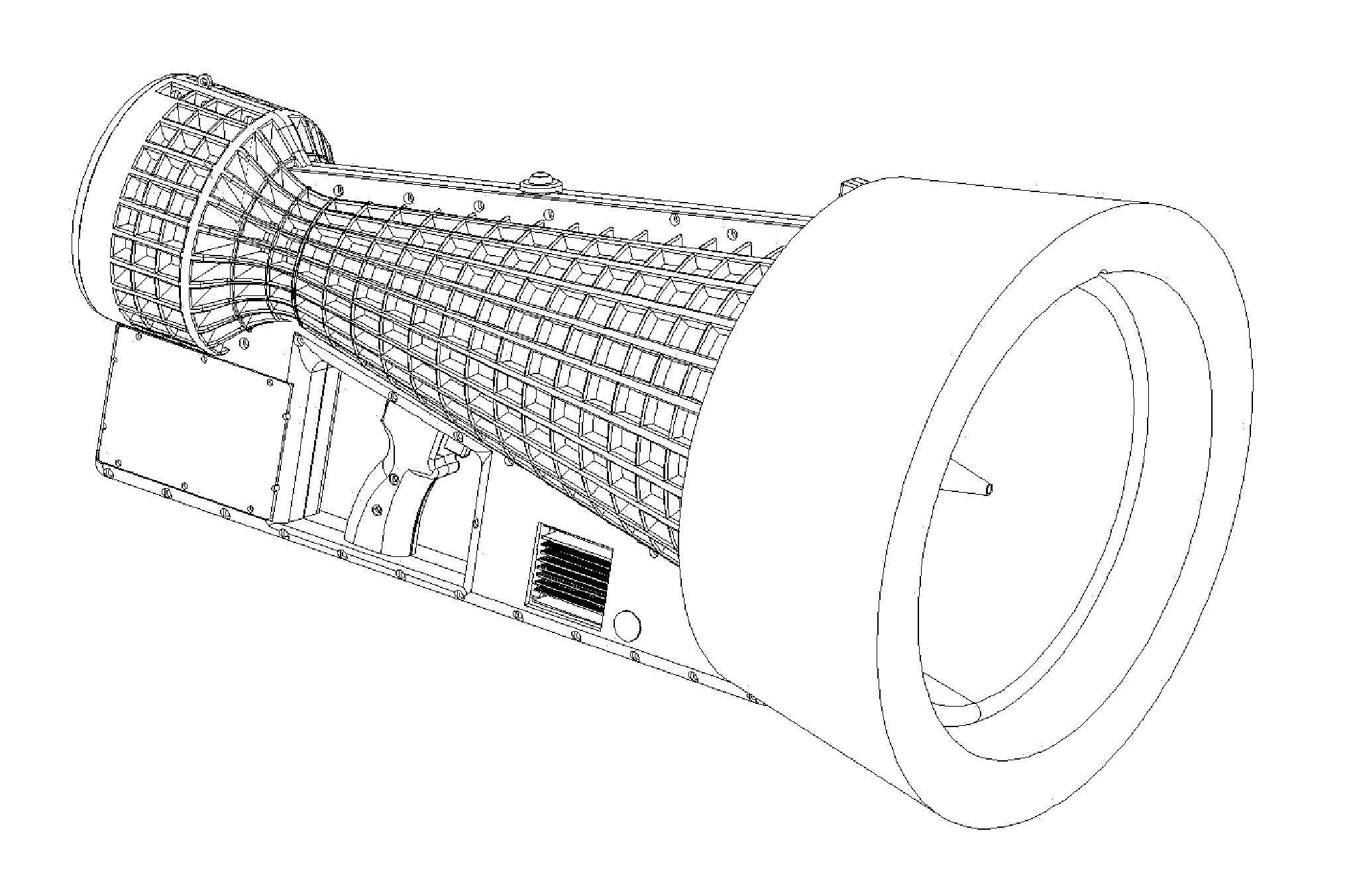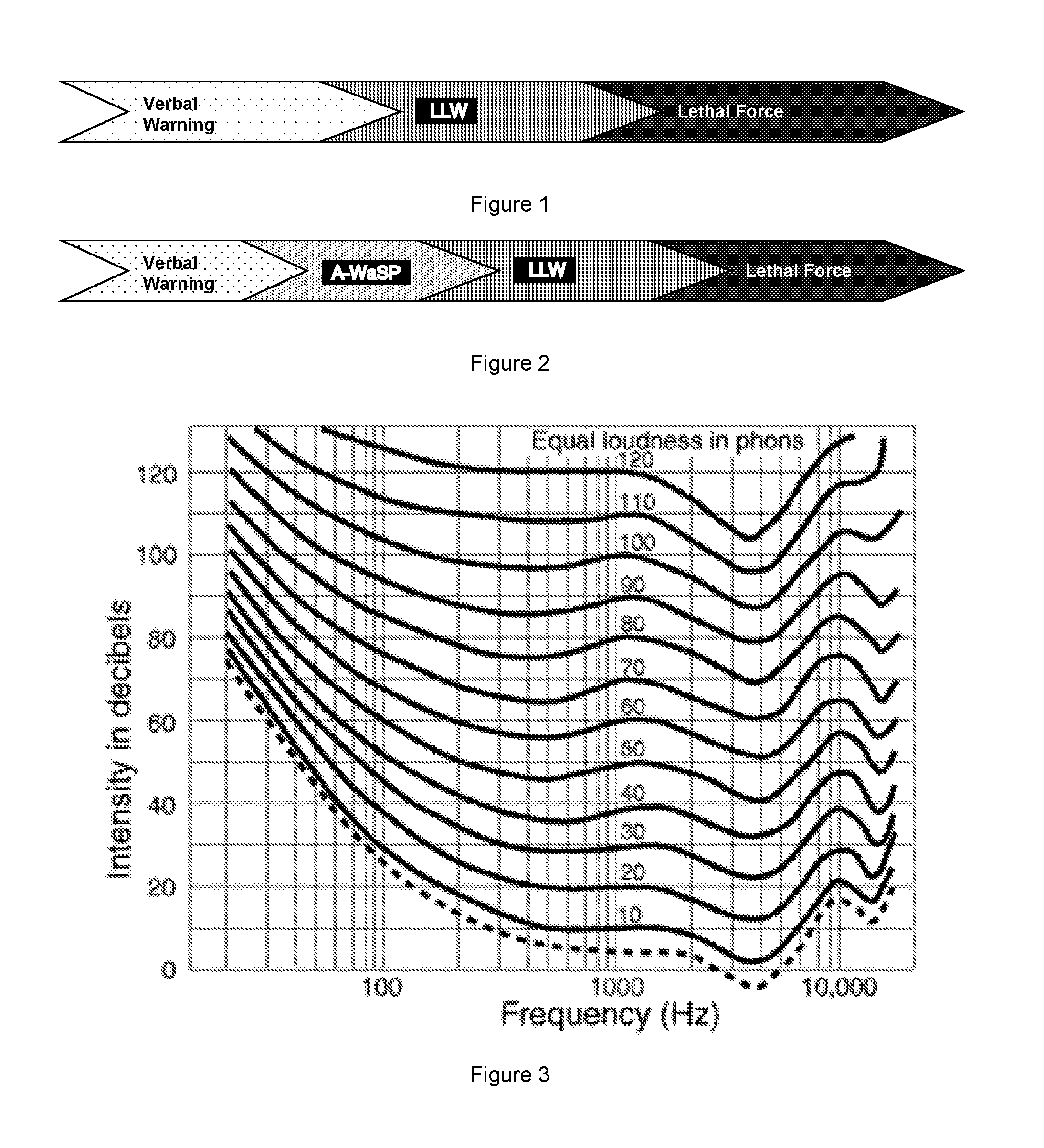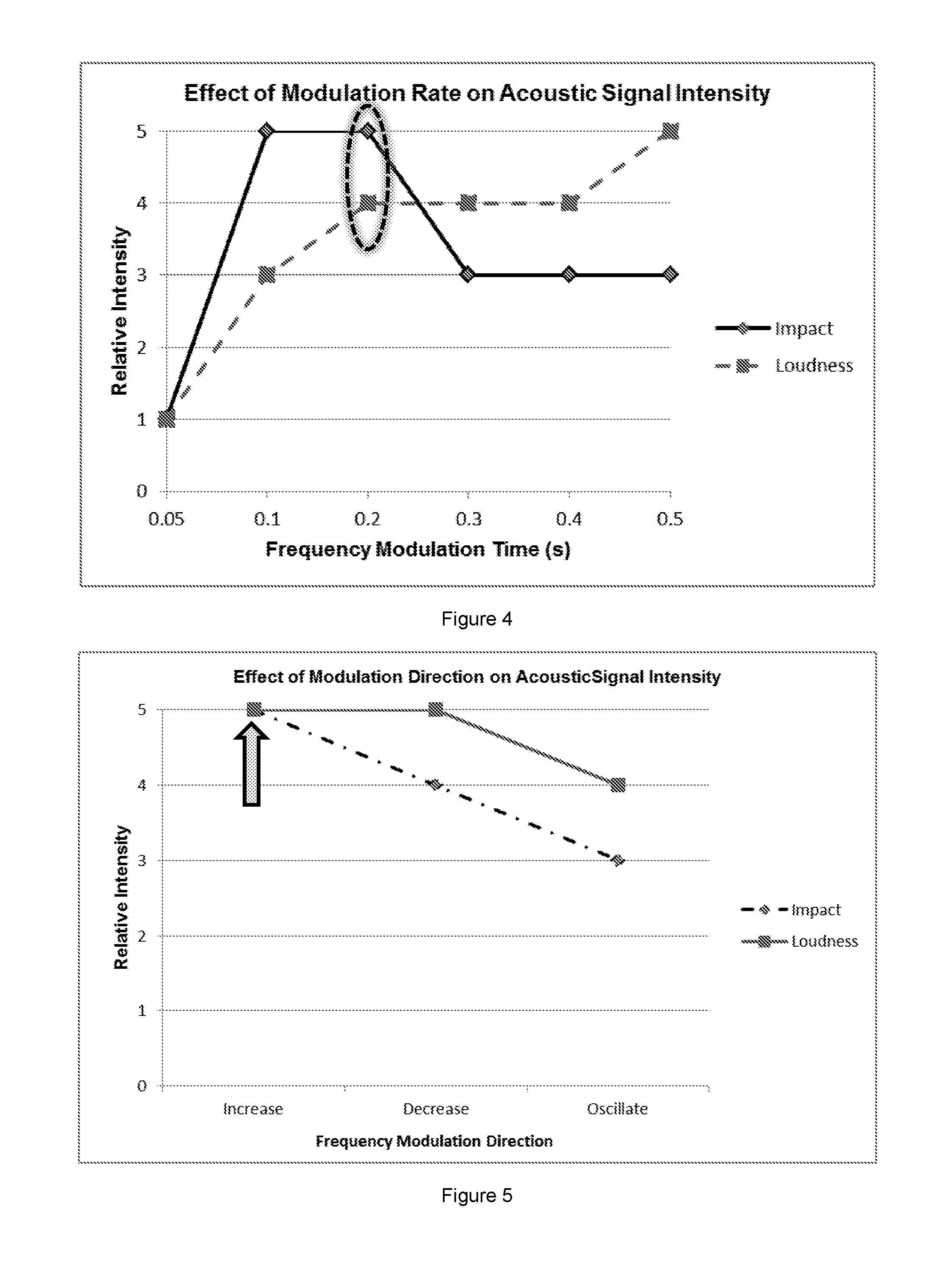Acoustic apparatus and operation
a technology of acoustic equipment and acoustic power, applied in the direction of sound producing devices, animal husbandry, weapons, etc., can solve the problems of large system size, inability to consider risk-free options, and inability to be mounted and powered by vehicles, and achieve high selectivity.
- Summary
- Abstract
- Description
- Claims
- Application Information
AI Technical Summary
Benefits of technology
Problems solved by technology
Method used
Image
Examples
Embodiment Construction
[0063]In overview a design for a portable acoustic device is presented that projects a specific acoustic waveform towards a target, creating a narrow beam of sound that is highly selective, minimising exposure to users and bystanders, whilst enabling a controlled dosage of sound to be applied to the target. This narrow cone of sound acts as a clear warning of Police attention at range and as the target nears the intensity rises creating a naturally escalating deterrent. The acoustic waveform is specified using principals from the field of psycho-acoustics combined with empirical human studies. The design of the device is tailored to this waveform which allows a very high degree of directivity to be achieved. It is not intended as a tool for the communication of verbal messages. This waveform achieves maximum impact and intensity at the target whilst using a relatively low sound pressure level. This means that the exposure levels can be controlled to ensure they are within existing h...
PUM
 Login to View More
Login to View More Abstract
Description
Claims
Application Information
 Login to View More
Login to View More - R&D
- Intellectual Property
- Life Sciences
- Materials
- Tech Scout
- Unparalleled Data Quality
- Higher Quality Content
- 60% Fewer Hallucinations
Browse by: Latest US Patents, China's latest patents, Technical Efficacy Thesaurus, Application Domain, Technology Topic, Popular Technical Reports.
© 2025 PatSnap. All rights reserved.Legal|Privacy policy|Modern Slavery Act Transparency Statement|Sitemap|About US| Contact US: help@patsnap.com



